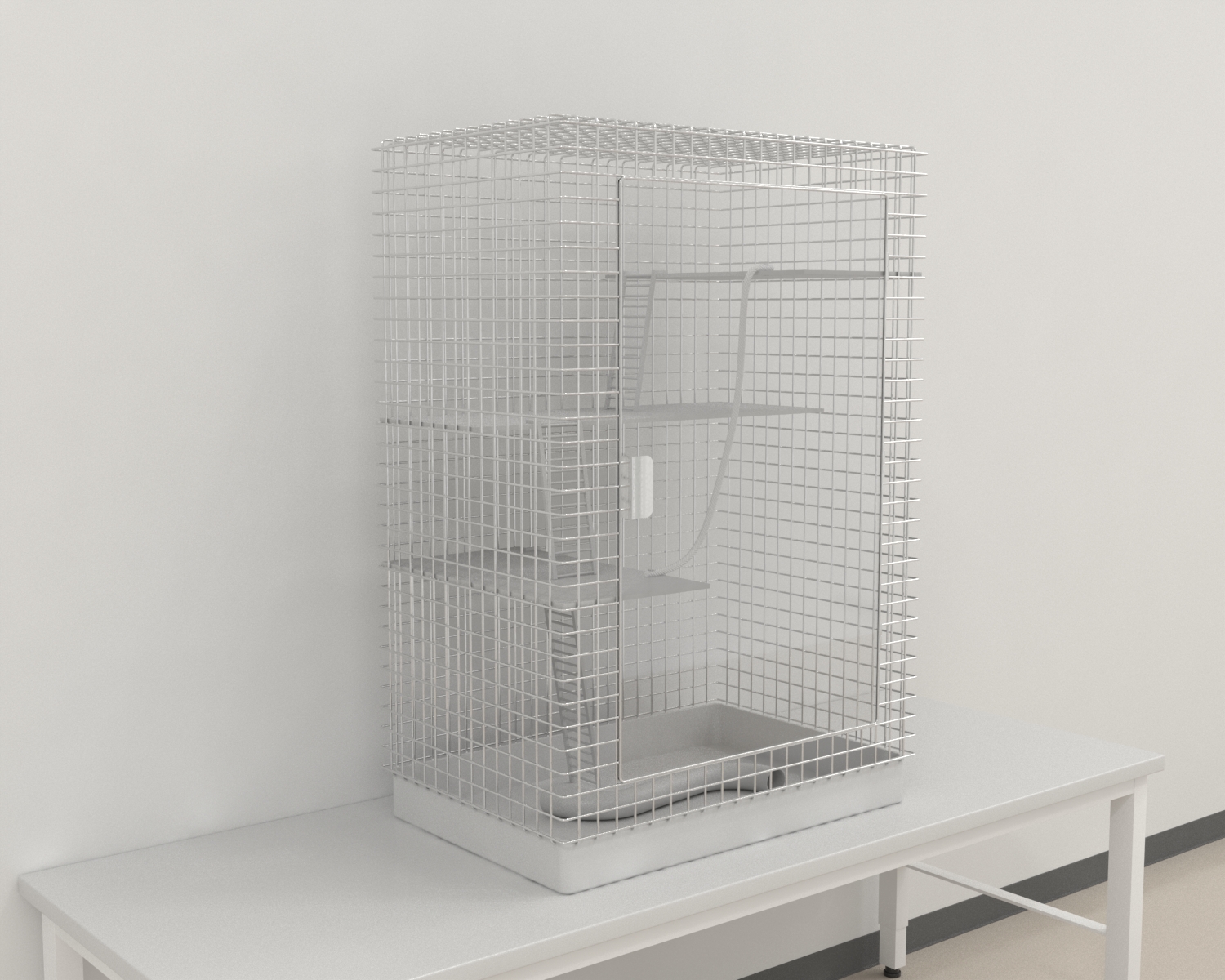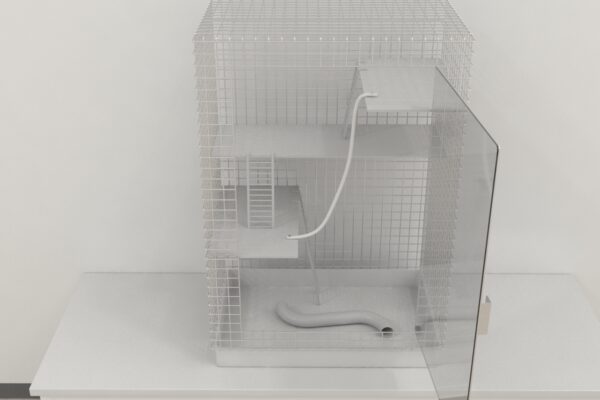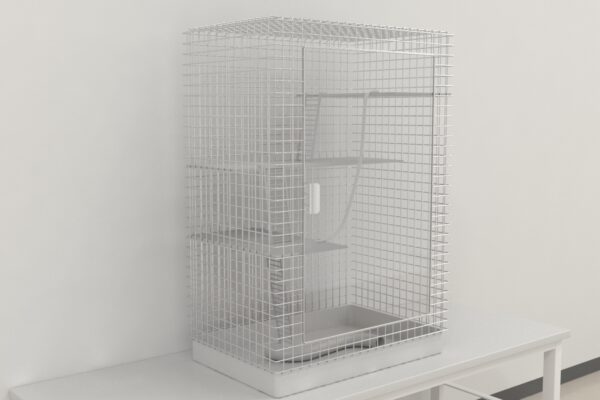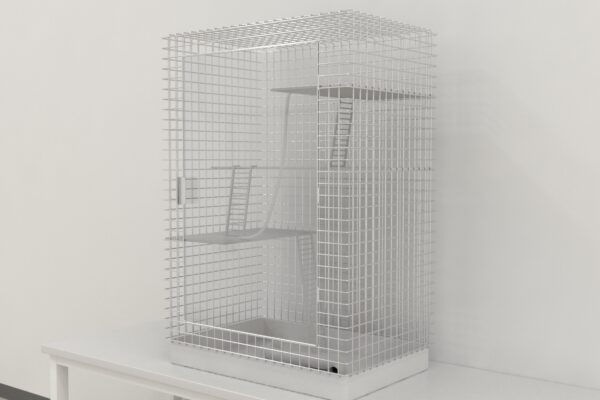The Environmental Enrichment Housing Cage is used in different studies that involves the impact of housing conditions in animal models.
The task apparatus is a small chamber with an opening on one end, and a chamber with a platform onto which the animal can climb at the other end. The trough on the right side of the platform can be filled with flavored food pellets. The platform overhangs its base, preventing the animal from raking the pellets, thus testing the animal’s grasping ability.
Mazeengineers offers the Environmental Enrichment Housing Cage.




